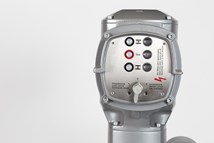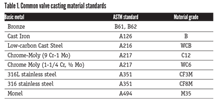Managing Valve Repair on Short Turnarounds and Downtimes
Valves are integral components in most industrial processes' overall operating efficiency, especially those in power, chemical and paper plants.
#components #maintenance-repair
Any industrial valve, across the board, has the potential to fail. Determining the best way to repair industrial valves depends on its type, its use, what material it’s made of and why it needs repair. Safety and efficiency are key aspects to be considered anytime a valve repair must be performed on a short turnaround.
THE RISK OF UNSCHEDULED VALVE REPAIR
The key to reducing the need for unscheduled valve repair is maintenance. Industrial valves that are well-maintained are more reliable and longer lasting than if they are simply installed and ignored. When routine inspections aren't performed along with the appropriate maintenance, valves are more likely to fail. Any money that was saved on maintaining them will be spent on costly downtime. It's crucial to know the lifespan of industrial equipment, including valves, and to do periodic maintenance so that it can reach its potential.
Essentially, there are three types of maintenance that industrial facilities need to consider. The first is reactive. Reactive maintenance is based on equipment failure. For valves, this means that they are run until they fail, and only then is repair or replacement performed. This type of maintenance is not ideal because it is typically much more expensive. The downtime alone results in lost revenue, which doesn't even account for the repair cost.
The other two types of maintenance—preventive and predictive—are critical because they can potentially reduce or eliminate the need for reactive maintenance. Using preventive maintenance involves performing regularly scheduled valve inspections and testing before any equipment failures. The inspections and tests allow planners and maintenance managers to determine which repairs or replacements are needed for critical valves.
Preventive maintenance is scheduled on specific timeframes to reduce rates of equipment failure and subsequent downtime. It is most effective when valves and other equipment's lifespan is known, as that will allow a better inspection schedule to be created and used. With preventive maintenance, overall plant efficiency will increase, and the cost of maintenance is far less than repair or replacement due to failure.
Predictive maintenance is condition-based and uses computerized data and smart instrumentation to allow maintenance engineers to schedule maintenance efficiently. Many of today's industrial plants use this technology because it helps improve equipment reliability, lower maintenance expenses and reduce downtime by uncovering weaknesses before equipment failure.
As the name implies, predictive maintenance predicts equipment conditions by analyzing various information such as maintenance history, design data, performance history, diagnostic information and operating logs.
REACTIVE THINKING
The run-to-failure approach, or reactive thinking, usually isn't a good way to manage valves—especially in pressurized systems. In those systems, an equipment failure can not only be very costly to repair, but it can also be very unsafe, resulting in equipment damage, serious injuries or worse. This approach is also ineffective because the unplanned downtime that results is often far more expensive than creating scheduled downtime when inspections and preventive maintenance can be performed.
For example, a poorly performing pressure relief valve with issues such as leaks, failure to open at a set pressure, chattering, closing too far below the set pressure and the like, can quickly lead to a loss in production, increased maintenance and operating costs, and possibly even complete line failure. Alternatively, preventive and predictive maintenance can result in identifying weaknesses before such negative consequences occur.
The timing of planned shutdowns for maintenance and repairs is a major factor in reducing downtime. Scheduling shutdowns regularly, based on the lifecycles and conditions of critical valves and other equipment, can save labor, time, and money. Scheduled downtime is the ideal time to have valves inspected, tested, and maintained.
MANAGING MAINTENANCE
Industrial plants that need valve repair on short turnarounds and minimized downtimes require a turnkey company that can perform all the necessary work, ensuring that all technicians work toward the same goal, with the same expectations and without the risk of poor planning and inadequate communication.
When looking for a valve repair company, industrial plants should opt for one that helps with the planning of preventive maintenance schedules and inspections and is also available for those inevitable emergency repair situations. This is especially important when dealing with pressure-relief valves. Even the best preventive and predictive maintenance programs cannot mitigate all problems. A valve repair company that is available 24/7 for service is essential.
Find a turnkey valve company that provides more than just valve repair—one that also has qualified welders and machinists. Companies with teams of professionals will better serve industrial plants by supporting the whole repair, and not hiring other contractors for the specialized tasks. When one company can assess a plant's valve repair needs, mobilize a crew with the correct people, tools and parts, and get onsite to solve a valve problem quickly and efficiently, the plant saves time and money.
Ben Medlock is director of Valve and Machining Services at SVI Industrial in Pineville, NC.
RELATED CONTENT
-
Do Current Headwinds Affect the Repair or Replace Decision for Valves?
Perspectives from a valve repair company and and OEM on what drives end users to make this determination.
-
Enhanced Safety in LNG Applications
For more than 40 years, the safety record of the global LNG industry has been excellent, due to attention to detail in engineering, construction and operations.
-
Hardfacing Alloys and Processes for Advanced Ultra-Supercritical
Cobalt-based Stellite 6 has been the workhorse for providing improved wear resistance and service life in valve components installed in power generating facilities for over 75 years.







 Unloading large gate valve.jpg;maxWidth=214)


